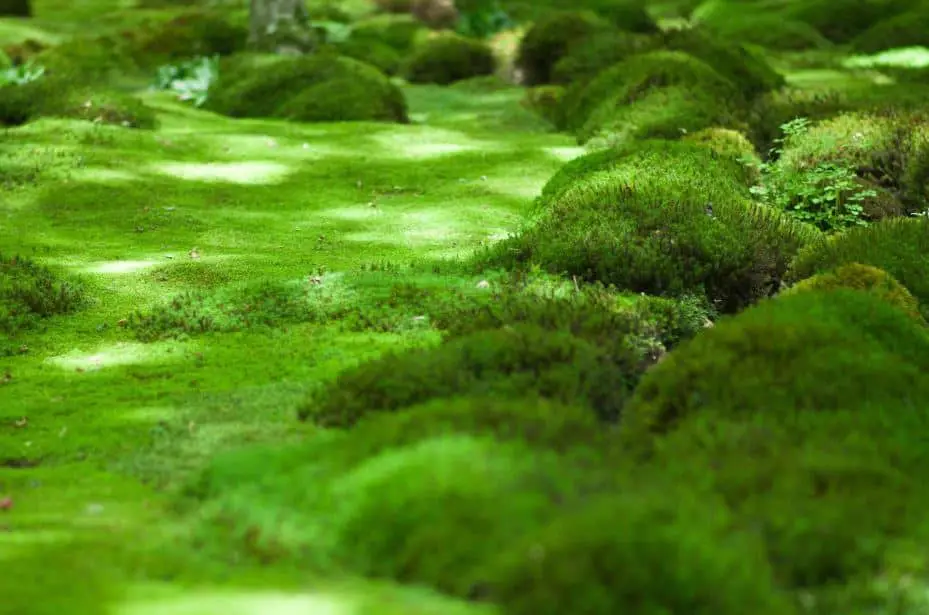Moss on a lawn may be a homeowner’s worst enemy in various parts of the nation. When it becomes dormant in the summer, it supplants turf grass and produces unattractive brown patches. For the rest of us, moss may be a wonderful substitute for that demanding grass. When used as a lawn, moss offers a lovely springy ground cover that is manageably walkable and a no-mow option with rich, deep color and texture. It can be an excellent option for your lawn’s requirements. Find out how to create a moss lawn to determine whether it’s the best choice for you.

Moss Lawns Instead of Grass
Moss lawns use less water, time, and fertilizer than grass lawns. It’s almost a tree-growing substance. True enough, it does, along with ladders, rocks, wheelbarrows, etc. You see what I mean. Moss is the natural carpet of the world, and under the appropriate circumstances, it may be a wonderful substitute for grass.
A few requirements must be satisfied to have moss lawns rather than grass ones. Moss needs an acidic setting, dense soil, sheltered sun to semi-shade, and regular hydration. There are several varieties of moss. Some of them consist of spreading pseudocarp or clumping macrocarpa.
Selecting natural species in your area is the best approach to installing moss on a lawn. Doing so won’t be going against nature since the plants are bred to flourish in the particular environment and will take less time to grow and even less time to maintain. The only care the plants need once they have taken root is weeding and hydration.
How to Grow a Moss Lawn
The crucial phase is site preparation. Rake the space smooth and debris-free, and remove any plants that may be there. Make sure the soil has a pH of around 5.5. Apply sulfur as instructed to reduce the pH if your soil has a higher pH. After amending the soil, press it down to a firm surface. The time to plant is then.
Since mosses are crucial ecosystem components and require a long time to reestablish in the environment, it is not advised to extract them from nature. You can buy mosses from various nurseries or proliferate moss by mixing it with water to make a slurry, which you can then spread over the surface you’ve prepared.
While the second approach requires more time to complete, it enables you to choose a wild moss from your environment and utilize it in place of a moss lawn. This is advantageous since you know that moss prefers your site’s circumstances and is a native moss, which increases the likelihood that the plant will thrive.
Moss Lawn Care
You’re in luck if you’re a slack gardener. Moss lawns need little maintenance. During hot, dry conditions, give them 2 inches (5 cm) of water every day in the morning or evening, especially during the first five weeks. Pay care to the moss’s margins as they fill in since they might soon dry up.
Take care not to step on the moss repeatedly. Although it can withstand mild foot traffic, construct steps or stepping stones in more used locations. Moss should be weeded as necessary to keep rival plants at bay. Other than that, maintaining a moss lawn is as easy as it gets so that you can put your lawnmower away.


